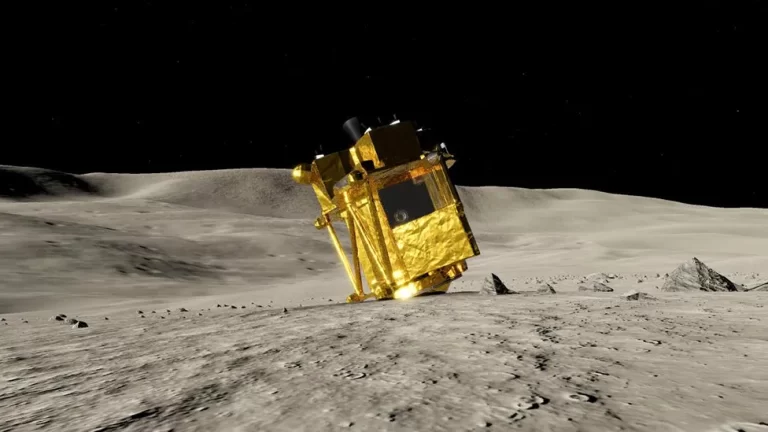Japan's Moon lander has survived the harsh lunar night, the country's space agency said on Monday.
“Last night, a command was sent to #SLIM and a response received,” Jaxa said on X, formerly Twitter. The craft was put into sleep mode after an awkward landing in January left its solar panels facing the wrong way and unable to generate power.
A change in sunlight direction later allowed it to send pictures back but it shut down again as lunar night fell. Jaxa said at the time that Slim (Smart Lander for Investigating Moon) was not designed for the harsh lunar nights, which last for the equivalent of two Earth weeks.
It said it planned to try to operate again from mid-February, when the Sun would shine again on Slim's solar cells. Jaxa said that communication with the lander was terminated after a short time – it was lunar midday, meaning the temperature of the communications equipment was very high.
It said preparations were being made to resume operations when instrument temperatures had cooled sufficiently. During its previous brief period of re-awakening, Slim was able to study its surroundings in detail and transmit new images to Earth.
Jaxa will be hoping that having survived the lunar night it will be able to continue its work. The landing in January made Jaxa only the fifth national space agency to achieve a soft touchdown on the Moon – after the US, the former Soviet Union, China and India.
A US spacecraft, the Odysseus Moon lander, made history on Thursday by becoming the first ever privately built and operated robot to complete a soft lunar touchdown.
Like Slim, it also landed awkwardly. Controllers at the operating company, Intuitive Machines, think their robot tipped on to its side at the moment of touchdown. Odysseus does, however, appear still to be functional and is communicating with Earth.
No pictures from the mission at the surface have yet been released.
— CutC by bbc.com


